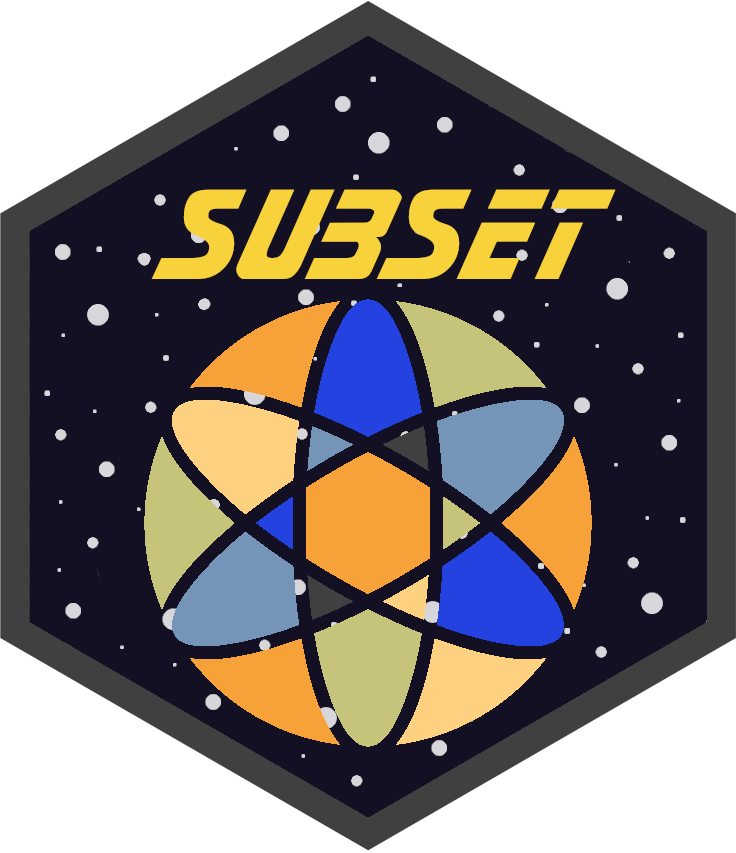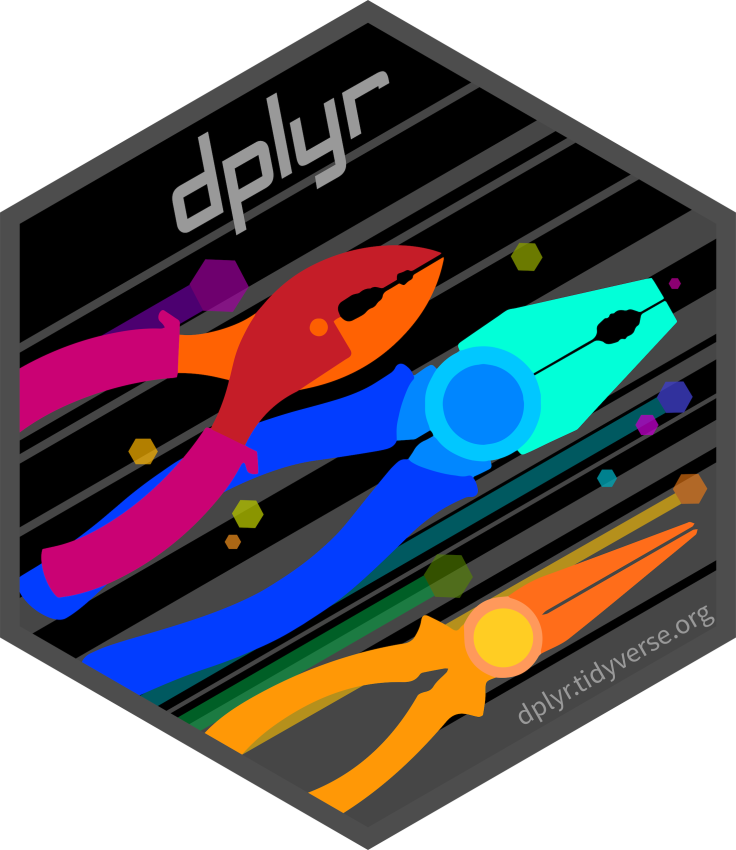library("lterdatasampler")Subsetting

There are various ways to subset a tibble. This sections shows the various methods with examples.
Tidyverse’s tibble subsetting webpage
Load data
The examples in this section use the pie_crab data from the lterdatasampler package (includes install instructions).
Load package
Create a tibble from a subset of the pie_crab data.
pie_crab_tbl <- tibble::as_tibble(lterdatasampler::pie_crab[1:10,1:7])
pie_crab_tbl# A tibble: 10 × 7
date latitude site size air_temp air_temp_sd water_temp
<date> <dbl> <chr> <dbl> <dbl> <dbl> <dbl>
1 2016-07-24 30 GTM 12.4 21.8 6.39 24.5
2 2016-07-24 30 GTM 14.2 21.8 6.39 24.5
3 2016-07-24 30 GTM 14.5 21.8 6.39 24.5
4 2016-07-24 30 GTM 12.9 21.8 6.39 24.5
5 2016-07-24 30 GTM 12.4 21.8 6.39 24.5
6 2016-07-24 30 GTM 13.0 21.8 6.39 24.5
7 2016-07-24 30 GTM 10.3 21.8 6.39 24.5
8 2016-07-24 30 GTM 11.2 21.8 6.39 24.5
9 2016-07-24 30 GTM 12.7 21.8 6.39 24.5
10 2016-07-24 30 GTM 14.6 21.8 6.39 24.5One column with $
Subsetting a column using $ and a column name will produce a vector.
pie_crab_tbl$site [1] "GTM" "GTM" "GTM" "GTM" "GTM" "GTM" "GTM" "GTM" "GTM" "GTM"str(pie_crab_tbl$site) chr [1:10] "GTM" "GTM" "GTM" "GTM" "GTM" "GTM" "GTM" "GTM" "GTM" "GTM"Rows and columns with [,]
Subsetting a tibble with [] will always produce a tibble.
This is different from a data.frame where you may extract a scalar, vector, or data.frame.
Load data.frame
Create a data.frame from the pie_crab_tbl.
pie_crab_df <- as.data.frame(pie_crab_tbl)
pie_crab_df date latitude site size air_temp air_temp_sd water_temp
1 2016-07-24 30 GTM 12.43 21.792 6.391 24.502
2 2016-07-24 30 GTM 14.18 21.792 6.391 24.502
3 2016-07-24 30 GTM 14.52 21.792 6.391 24.502
4 2016-07-24 30 GTM 12.94 21.792 6.391 24.502
5 2016-07-24 30 GTM 12.45 21.792 6.391 24.502
6 2016-07-24 30 GTM 12.99 21.792 6.391 24.502
7 2016-07-24 30 GTM 10.32 21.792 6.391 24.502
8 2016-07-24 30 GTM 11.19 21.792 6.391 24.502
9 2016-07-24 30 GTM 12.68 21.792 6.391 24.502
10 2016-07-24 30 GTM 14.55 21.792 6.391 24.502Extracting a value
Subsetting one value from a data.frame leads to a scalar
pie_crab_df[1,1][1] "2016-07-24"str(pie_crab_df[1,1]) Date[1:1], format: "2016-07-24"Subsetting one value from a tibble leads to a tibble
pie_crab_tbl[1,1]# A tibble: 1 × 1
date
<date>
1 2016-07-24Extracting a row
Subsetting a row from a data.frame leads to a data.frame
pie_crab_df[1,] date latitude site size air_temp air_temp_sd water_temp
1 2016-07-24 30 GTM 12.43 21.792 6.391 24.502str(pie_crab_df[1,])'data.frame': 1 obs. of 7 variables:
$ date : Date, format: "2016-07-24"
$ latitude : num 30
$ site : chr "GTM"
$ size : num 12.4
$ air_temp : num 21.8
$ air_temp_sd: num 6.39
$ water_temp : num 24.5Subsetting a row from a tibble leads to a tibble
pie_crab_tbl[1,]# A tibble: 1 × 7
date latitude site size air_temp air_temp_sd water_temp
<date> <dbl> <chr> <dbl> <dbl> <dbl> <dbl>
1 2016-07-24 30 GTM 12.4 21.8 6.39 24.5Extracting a column
Subsetting a column from a data.frame leads to a vector
pie_crab_df[,1] [1] "2016-07-24" "2016-07-24" "2016-07-24" "2016-07-24" "2016-07-24"
[6] "2016-07-24" "2016-07-24" "2016-07-24" "2016-07-24" "2016-07-24"str(pie_crab_df[,1]) Date[1:10], format: "2016-07-24" "2016-07-24" "2016-07-24" "2016-07-24" "2016-07-24" ...Subsetting a column from a tibble leads to a tibble
pie_crab_tbl[,1]# A tibble: 10 × 1
date
<date>
1 2016-07-24
2 2016-07-24
3 2016-07-24
4 2016-07-24
5 2016-07-24
6 2016-07-24
7 2016-07-24
8 2016-07-24
9 2016-07-24
10 2016-07-24Extracting a combo of columns and rows
Subsetting rows and columns together from a data.frame leads to a data.frame
pie_crab_df[1:3,c("date","air_temp","size")] date air_temp size
1 2016-07-24 21.792 12.43
2 2016-07-24 21.792 14.18
3 2016-07-24 21.792 14.52str(pie_crab_df[1:3,c("date","air_temp","size")])'data.frame': 3 obs. of 3 variables:
$ date : Date, format: "2016-07-24" "2016-07-24" ...
$ air_temp: num 21.8 21.8 21.8
$ size : num 12.4 14.2 14.5Subsetting rows and columns together from a tibble leads to a tibble
pie_crab_tbl[1:3,c("date","air_temp","size")]# A tibble: 3 × 3
date air_temp size
<date> <dbl> <dbl>
1 2016-07-24 21.8 12.4
2 2016-07-24 21.8 14.2
3 2016-07-24 21.8 14.5Dplyr
There are also many ways to subset a tibble with dplyr.
